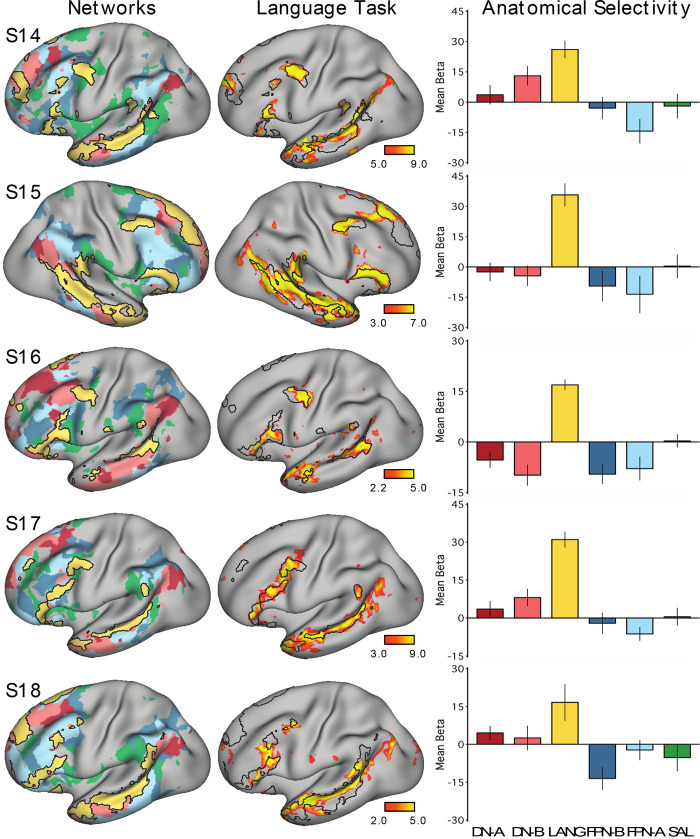Fig. 18.
Triplication of selective activation of the language network during a language task contrast. Analysis of the triplication cohort (study 4) recapitulated the findings from the original (studies 1 and 2; see Fig. 6) and replication (study 3; see Fig. 13) cohorts. Left: the networks defined by intrinsic functional connectivity from Fig. 16 are replotted. The candidate language network (LANG) is shown in yellow, with the salience network (SAL) in green, the frontoparietal control networks (FPN-A and FPN-B) in blue, and the default networks (DN-A and DN-B) in red. Middle: task activation for the contrast of reading sentences vs. reading lists of nonwords are replotted from Fig. 17. Right: bar graphs show the mean β-values for the sentences > nonwords contrast, averaged within each within-individual a priori-defined network, along with the standard error of the mean. LANG was the only network showing consistently higher activation for sentences > nonwords, showed the highest mean activation of all the networks in all subjects, and in most cases (S15, S16 and S18) was the only network that showed activity clearly above baseline in the task contrast.

